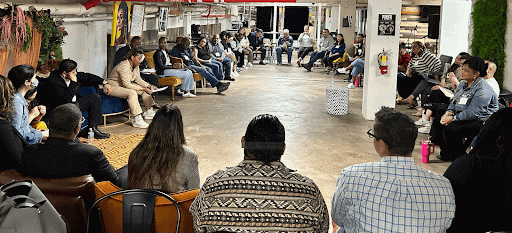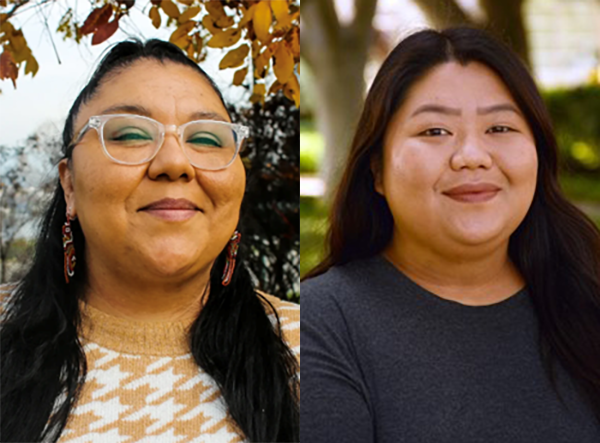NCG Member Spotlight: A Conversation with Irvine Foundation’s Amy Saxton
As a part of our Member Spotlight series, we spoke with Amy Saxton, Vice President of Program Development at The James Irvine Foundation. Amy shared how she is approaching her work, program strategy, and where others can jump in to collaborate.
When did you join Irvine, and what were you doing before?
I came to Irvine in 2017 after serving as CEO of Summer Search, a national youth development nonprofit, and as a manager at Bridgespan, consulting for nonprofits, foundations, and public school systems. I was also busily parenting two kids under the age of five.
Irvine offered a role where I knew I could focus on strategy and talent development in a place where I share values with kind colleagues who are passionate about our mission. And as the daughter of an immigrant from Panama and someone who identifies as Black and bi-racial, I was also inspired by Irvine’s commitment to economic equity and its developing focus on racial equity.
What’s your role – and the development role – at the Foundation?
I’m the Vice President of Program Development, and I oversee a function that helps Irvine identify and develop future grantmaking, analyze and inform existing strategies, and cultivate partnerships.
Program strategy isn’t new in philanthropy or at Irvine, though the internal team we built here may be rare. The structure gives us the nimbleness to respond to emerging situations and develop new work to build out our portfolio and complement our existing initiatives.
What are some examples and outgrowths of your team’s work and what have you learned from that?
Recent examples include co-developing our latest initiative, Just Prosperity, with $107 million approved for its first four years, and a $40 million, four-year project focused on Housing Affordability. I’m also proud of how the team has been able to contribute to Irvine’s understanding of and commitment to equity. Early in the COVID-19 pandemic, the shocking disparities by race in cases, hospitalizations, deaths, and in who had access to relief funds led us to analyze the pandemic’s impact on workers earning low wages in California. That resulted in support of worker organizations to strengthen workplace protections in essential industries, deepen investments in small businesses, and reinforce partnerships for an equitable economic recovery that prioritize quality jobs. We’re committing $20 million this year to leverage public funding for more equitable recovery, like the Community Economic Mobilization Initiative.
What is Irvine’s current and planned approach to racial equity in grantmaking? What are your lessons learned so far?
Irvine has a long history of supporting organizations led by and/or serving people of color, but we haven’t always addressed structural racism’s impact on economic opportunity as an institutional priority. That was a missed opportunity for our mission. Now, we have articulated what we mean and why it matters to our goal of a California where all low-wage workers have the power to advance economically. At a minimum, I hope grantees can speak more plainly to us about their work to build power, fight racism, and name who and what inhibits economic justice. This includes telling us when we could do better. Our racial equity work ultimately means ensuring more money, power, and resources to organizations led by and serving the communities most often left out.
Putting this into practice in a development role means developing strategy and relationships with a focus on racial equity. For example: considering demographic data about grantees and those they serve, defining criteria to ensure we select vendors and engage with partners equitably, and engaging grantees and other partners to co-create goals for our work. We have a long way to go on what is a continuous journey.
Does this unique role in philanthropy and the work coming from it seem to fit into any of NCG's 5 Shifts?
Yes, collective action is one example. While partnerships across sectors is not new for Irvine, the development function identifies new strategic partnership opportunities that cut across our portfolio or may not fit into one grantmaking area.
We also embrace the shift to focus on systems and centering community. Irvine's newest initiative Just Prosperity supports a systems and policy change strategy that reflects the priorities of low-income Californians and their families by investing in organizations, partnerships, and new ideas that amplify worker voices, advance racial equity, and spark dialogue and action across the state. The team developed the initiative’s goals through engaging more than 30 Irvine grantees and doing deep design work with nine longstanding grantee-partners closest to the issues.
Is there opportunity to collaborate with other members in the NCG community around this work? If so, what are these opportunities?
Absolutely. Irvine welcomes partnerships with other NCG members. It can be as simple as comparing notes on a shared partner (our investments are public) to pooled funds to co-creating new investments. We have a long track record of partnering across sectors and welcome hearing from NCG members with ideas to accelerate progress to an equitable California.
What should colleagues in the field know about you personally – or be surprised to learn?
I have been passionate about movement throughout my life, and it’s important to me to balance time in my head with time in my body. I have a yoga teacher certification and, pre-motherhood, you’d find me in a bhangra or belly dancing class or on the salsa and bachata scenes. Now that my girls are older, and we’re (hopefully) in a better phase of the pandemic, I recently joined a hip-hop class. It is so good to be moving again with other humans.
Connect with Amy
Want to connect with Amy? Get in touch here.

